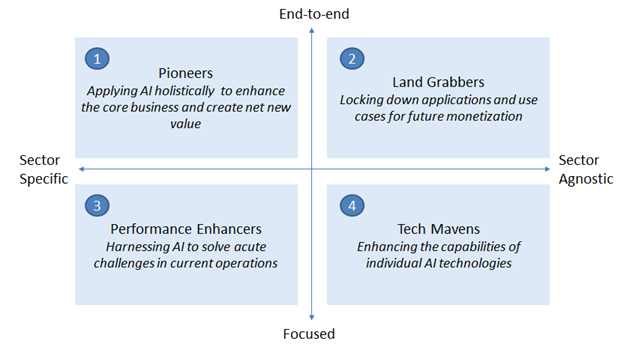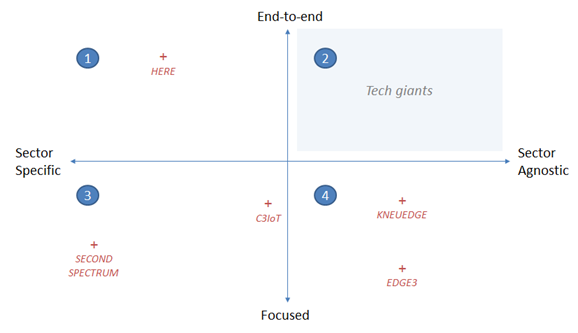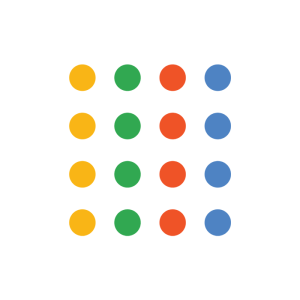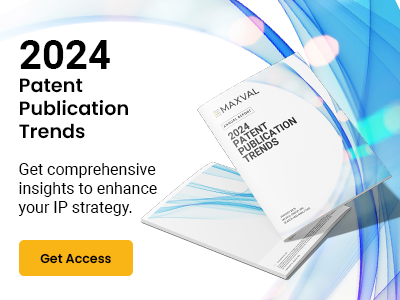The artificial intelligence (AI) landscape is growing quickly. Artificial intelligence startups raised $5B in 2016, a 10-fold increase since 2012.[1] Tech giants (Google, Microsoft, IBM) are contributing heavily to AI innovation in academic and practical pursuits. Google published 218 papers on machine learning in 2016, nearly double the number of publications in 2014.[2] In December 2016, Microsoft launched a new venture fund specifically to evaluate and fund AI startups, kicking off the fund with an investment in Element AI, then acquiring Maluuba just one month later. [3] [4]
For professional advisors in the technology field (lawyers, investors), AI innovation presents unique challenges. For one, the fast pace of innovation makes it challenging to keep one’s knowledge current. This will only continue. Due to recent advancements in AI across all dimensions – computational power, algorithms, and data – innovation cycles have shortened and the cost of innovation is dropping. This is lowering the barrier to entry, flooding the space with a diverse group of players. Another unique challenge is that discussions about AI are unavoidable in business circles today. AI is at the peak of the “hype cycle,” and knowledge in this space is often a way to start conversations and build credibility.
To address these challenges, MaxVal recently studied AI innovation. In this paper, we share a framework and results similar to what we develop for our clients during consulting engagements.
In Section 1, MaxVal shares an AI innovation framework. This framework contextualizes AI innovation into four distinct archetypes. Breaking up the landscape into logical parts enables focus, and allows a professional advisor to build expertise in the areas of greatest interest to their customers. This can be an important point of distinction in the marketplace.
In Section 2, MaxVal shares five identified “outlier” companies. Because of the high intensity of innovation, MaxVal developed a series of criteria and techniques to separate the wheat from the chaff. From a list of 20, MaxVal showcases five companies to watch in 2017 that illustrate the archetypes.
Section 1: AI Innovation Framework
AI innovation can be best characterized along two principles:
- Sector specific vs. sector agnostic. Is AI used as a competitive advantage for a single industry (e.g., logistics)? Or is the innovation broad based and generic, cutting across multiple industries and platform types (e.g., improvements in technology such as natural language processing, image recognition, machine learning)
- Solution type, e.g., “Front-end”, “Back-end”, “End-to-end”. Does the innovation promote a single AI technology (e.g., natural language processing, deep learning), or a combination involving disparate AI technologies?
When mapping these principles using a Gartner square, four distinct archetypes become clear:

Key takeaways:
- Tech giants’ activities, i.e., the activities of IBM, Microsoft, and Google follow Archetype 2: Land Grabbers. These companies are investing across several AI technologies. Their goal is “standards-setting” upon which further AI innovation is built.
- Archetypes 1, 3, and 4 provide ample opportunity for non-tech giants to compete, either by:
- Creating an AI solution tailored to sector-specific customer needs (ideal for large incumbent companies, e.g., auto manufacturers) – as Pioneers.
- Building an improved solution that can either interface with a sector specific or land-grabber solution (e.g., an enhanced image recognition software that can interface with IBM Watson, applied to law enforcement or counterterrorism) – as Performance Enhancers or Tech Mavens.
Section 2: “Outliers”: Companies positioned for success in 2017
During client engagements, MaxVal teams are often asked to provide an independent view on up-and-coming companies in a client’s industry. Clients are often interested in those companies that have eluded their competitive tracking efforts yet represent a substantial opportunity or threat to the business.
We conducted a simpler version of that exercise here, asking a slightly different question: “What are the innovative AI companies to watch in 2017?” From a list of over 1400 companies, MaxVal (intellectual property service providers) identified approximately 20 companies that met our rigorous criteria:
-
- Not a household name
- Still independent (not recently acquired)
- Upward trajectory (measured by successive rounds of funding, increasing patenting activity in the past 3 years)
- Partnership with a large entity (or consortium)
In this section, MaxVal showcases five of these 20 companies in this paper and offers a snapshot into each business:
- HERE: Pioneer
- SECOND SPECTRUM: Performance Enhancer
- C3IOT: Performance Enhancer
- KNEUEDGE: Tech Maven
- EDGE3: Tech Maven

Here (formerly Navteq and Nokia maps) provides digital mapping, location and satellite navigation services. The company incorporates real-time traffic and road condition data from sensors on board Mercedes, BMW, and Audi vehicles to provide a dynamic, up-to-date map to the user.
In December 2015, Here was bought by a consortium of German automakers (Volkswagen, BMW, Daimler) for $2.8B.[5] Since December 2016, Here has garnered the attention of several investors to further the consortium’s development efforts in autonomous vehicles (Tencent, NavInfo, and Singapore GIC in December 2016 acquiring a 10% stake, and Intel in January 2017 acquiring a 15% stake).[6][7]
Here is a prominent example of non-tech giants standing their ground against tech giants in “land grabber” mode. Here was acquired by the German automakers for the purpose of developing an alternative to Google maps.[8] Despite the ubiquity and zero cost nature of Google Maps and Google Local services, Here has expanded its footprint beyond its German automaker owners, providing mapping solutions to Amazon, Microsoft, and other corporate entities.
The company owns over 800 active patent families, with an accelerating patent filing trend in recent years (173 families in 2014). Recently published patent documents include innovations across the AI spectrum: data management (comprehensive map data), deep learning (image recognition, tailored personal experiences), autonomous driving (navigation, positioning, error measurement and correction), and IoT (sensor detection, fleet management), to name a few. The company also continues investing in adjacencies, such as indoor mapping and aerial delivery.
SECOND SPECTRUM: Archetype 3, Performance Enhancer
Second Spectrum provides a machine intelligence-driven solution that enables sports teams to enhance player performance and inform game strategy.[9] Founded in 2013 by two members of USC’s Computational Behavior Group, the company makes available and analyzes thousands of hours of game footage to extract insights using a unique combination of rules-based approaches and a solution that enables easy access to game footage.
Second Spectrum has had a short but productive history. The company closed a Series A on August 1, 2015.[10] In 2016, the company signed a multi-year deal with the NBA to become the Official Optical Tracking Provider of the NBA starting in the 2017-2018 season, providing advanced statistics (e.g., speed, distance, drives, paint touches, defensive impact).[11] The company currently works with two-thirds of NBA teams (including all recent NBA champions) as well as the NFL, NHL, and MLB.
Second Spectrum has filed a single patent family (US20150248917) to enable capture and analysis of events from video feeds, including metrics related to sports performance via automated, machine-based algorithms.
C3IoT: Archetype 3, Performance Enhancer
C3IoT is developing a next generation data analytics platform that customers can use to build predictive analytics capabilities. The company was founded in 2009 by serial entrepreneur Thomas Siebel of Siebel Systems. Originally named C3 Energy, the company initially targeted energy companies to establish proof of concept. The company rebranded in 2016 as C3IoT, embracing the demand for predictive data analytics capabilities beyond the energy sector, including healthcare and banking.[12] On March 2, 2017, C3IoT closed a Series E financing round valuing the company at $1.4B.[13]
C3IoT markets four products that enable it to meet any customer at their level and build an IoT predictive suite of capabilities that best fit the company’s vision. The company markets both off-the shelf machine learning-enabled software applications as well as a platform-as-a-service option for deploying custom industrial-scale IoT applications. To support the PAAS solution and enhance the predictive capability, C3IoT leverages sensor data from over 20 industrial-scale deployments with C3IoT customers (100 million connected IoT sensors). C3IoT customers include private and government customers – in 2016, C3IoT won a $25 million contract to track energy use by the U.S. State Department at more than 22,000 facilities spread globally.[14]
C3IoT has approximately 5 active patent families, filed in the past two years. Recently published patent documents include a development platform for enterprise IoT applications and trained algorithms for predictive analytics applied to cybersecurity, forecasting energy consumption, and forecasting energy billing.
KNUEDGE: Archetype 4, Tech Maven
KnuEdge develops next generation and radical technologies in voice biometrics and neural computing, focused on fundamentally altering the way humans interact with machines. The company was founded in 2005 by former NASA chief Daniel Goldin as Intellisis, and rebranded in 2016 as KnuEdge.[15] In 2015, the company announced that it had raised over $100M over multiple funding rounds.[16]
KnuEdge markets four products to military and corporate customers. The company’s flagship product, KnuVerse, is a “military grade” voice recognition and authentication system that remains effective in noisy environments. The company continues to develop products based on neural network principles, having already developed a novel chip technology that surpasses industry standards of scalability and latency.
KnuEdge has over 40 active patent families, with the first filings in 2009. Since then, the company has accelerated its efforts – filing 14 new patent families in 2015, up from single digits in years prior. Recently published patent documents include innovations in voice enhancement, signal processing for noise reduction, and latency reduction.
EDGE3: Archetype 4, Tech Maven
EDGE3 provides an advanced vision analytics engine that finds application across several industry verticals. Founded in 2005 by engineers who built the Embry Riddle Machine Vision Lab, the company has developed a vast library of vision stereo algorithms, including a “depth map” that enables real-time, continuous measurement. The algorithms enable the use of low-cost, inexpensive cameras typically found in consumer electronics, thus making the capability affordable and accessible.
The company has applied the vision analytics engine to two marketed products, Drive and Gauge.[17] Drive is an in-cabin system that monitors drivers for signs of distraction (texting, gaze direction, drowsiness) and can be tailored to the unique traits of each driver via Edge3’s machine trained algorithms. Gauge is a mobile calculation algorithm used to measure size and distance from an image. The company has found application in transportation and logistics (measuring the size of packages for shipping efficiency) and in healthcare (tracking the size of wounds and skin abnormalities to optimize treatment).
The company has been awarded over 40 patents over the past 4 years (5 active patent families). The patents are drawn primarily to human-computer interface algorithms, including context-specific verbal and gesture-based commands, context identification, and data classification.
Conclusion
The volume and depth of innovation in the AI market is much more than can be made sense of in a single paper. To facilitate identifying and tracking innovation in this space, MaxVal has provided a framework that groups the innovation in AI into four archetypes –Pioneer, Land Grabber, Performance Enhancer, and Tech Maven. This mental model can be a useful “rule of thumb” as professional advisors navigate and track innovation in this market and determine which companies their firms are best suited to serve.
As for tracking specific innovative companies, we welcome our readers’ participation in this conversation. How do your organizations track AI developments in-house, and what criteria do you use? What companies should be recognized as the innovative AI companies to watch in 2017?
–by Deepa R. Krishna and Mark O’Donnell
References:
[1] https://www.cbinsights.com/blog/artificial-intelligence-startup-funding/
[2] https://www.technologyreview.com/s/603984/googles-ai-explosion-in-one-chart/
[3] https://www.bloomberg.com/news/articles/2016-12-12/microsoft-starts-new-venture-fund-with-investment-in-bengio-s-element-ai
[4] https://techcrunch.com/2017/01/13/microsoft-acquires-maluuba-a-startup-focused-on-general-artificial-intelligence/
[5] www.engadget.com/2015/07/13/uber-nokia-here/
See also https://www.reuters.com/article/us-nokia-here-idUSKBN0TN1J020151204
[6] https://www.reuters.com/article/us-here-equity-idUSKBN14G0PY
[7] https://www.reuters.com/article/us-intel-here-equity-idUSKBN14N0RN
[8] https://fortune.com/2016/04/06/amazon-microsoft-here-map/
[9] https://www.secondspectrum.com/aboutus.html
[10] https://www.crunchbase.com/organization/second-spectrum#/entity
[11] https://pr.nba.com/nba-announces-multiyear-partnership-sportradar-second-spectrum/
[12] https://www.bloomberg.com/news/articles/2016-09-01/tech-billionaire-s-data-startup-c3-iot-raises-70-million
[13] https://www.crunchbase.com/organization/c3#/entity
[14] https://www.bloomberg.com/news/articles/2016-09-01/tech-billionaire-s-data-startup-c3-iot-raises-70-million
[15] https://www.crunchbase.com/organization/knuedge#/entity
[16] https://www.sandiegouniontribune.com/business/technology/sdut-goldin-nasa-knuedge-intellisis-calit-tirias-2016jun07-story.html




